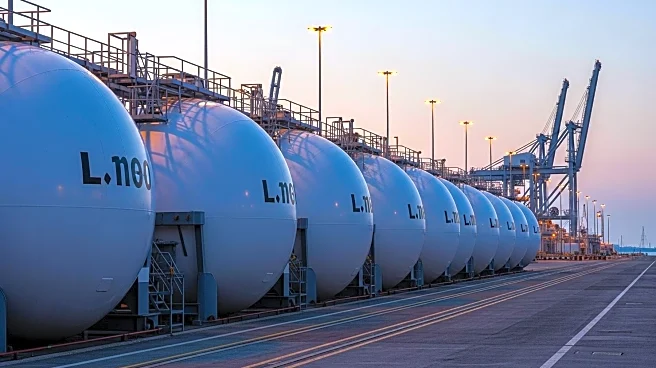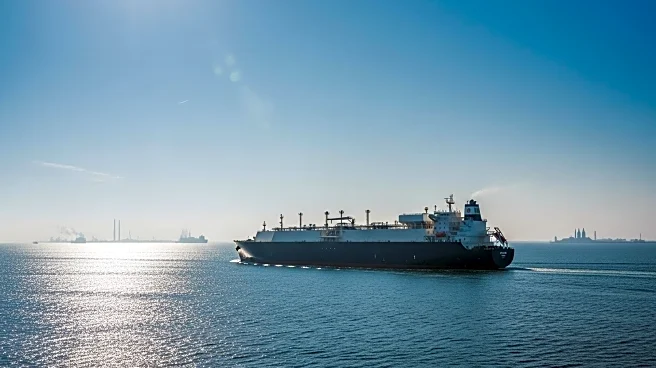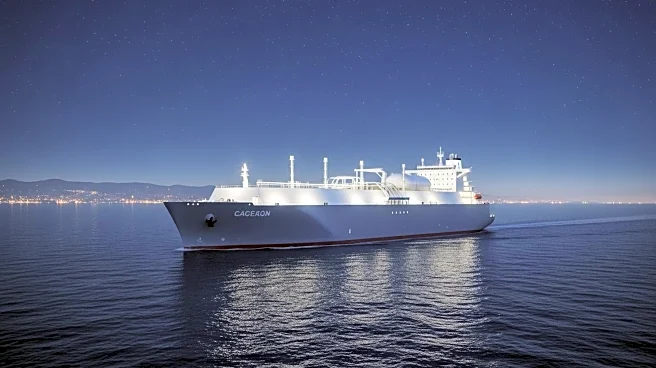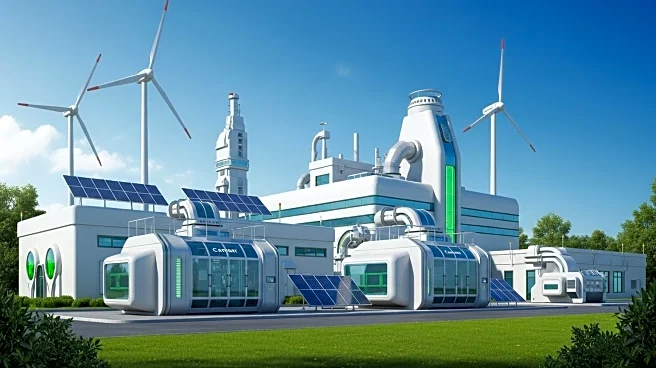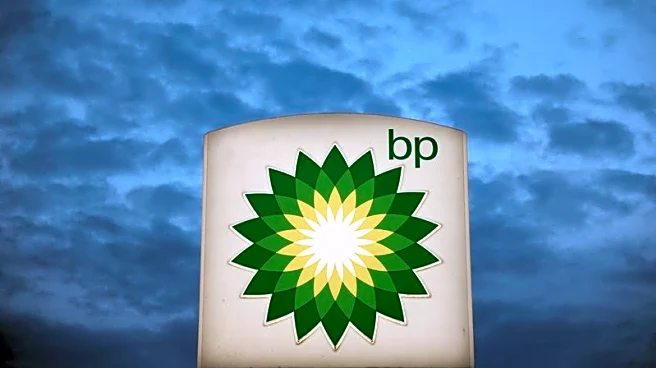What is the story about?
What's Happening?
U.S. liquefied natural gas (LNG) exports hit a record high in September, reaching 9.4 million metric tons, surpassing the previous record of 9.3 million metric tons in August. This increase was driven by strong demand from Europe and Asia, despite operational disruptions at major U.S. facilities like Cheniere Energy's Sabine Pass and Berkshire Hathaway's Cove Point. Europe remains the primary destination for U.S. LNG, receiving two-thirds of the exports, while Asia accounted for over 17%. The high export levels reflect the U.S.'s position as the world's largest LNG exporter, significantly impacting global energy markets.
Why It's Important?
The record-high LNG exports underscore the U.S.'s critical role in global energy supply, particularly as Europe seeks alternatives to Russian gas amid geopolitical tensions. The sustained demand from Europe highlights the continent's reliance on U.S. LNG to meet its energy needs, especially during the transition away from Russian energy sources. This trend could strengthen economic ties between the U.S. and Europe, while also influencing global LNG pricing and trade dynamics. The U.S.'s ability to maintain high export levels despite facility outages demonstrates the resilience and capacity of its energy infrastructure.
What's Next?
As Europe continues to diversify its energy sources, U.S. LNG exports are likely to remain strong, potentially leading to further investments in LNG infrastructure and capacity expansion. The ongoing geopolitical situation may prompt European countries to secure long-term LNG contracts with the U.S., ensuring energy security. Additionally, the U.S. may explore new markets in Asia and other regions, further solidifying its position in the global LNG market. The environmental implications of increased LNG production and exportation may also prompt discussions on balancing energy needs with climate commitments.
AI Generated Content
Do you find this article useful?
